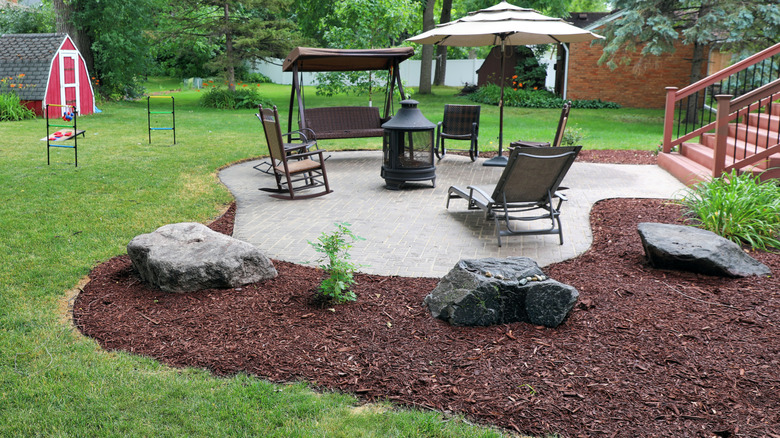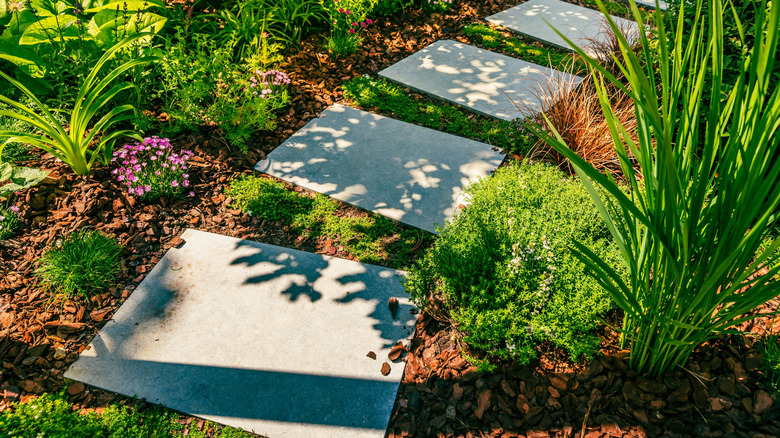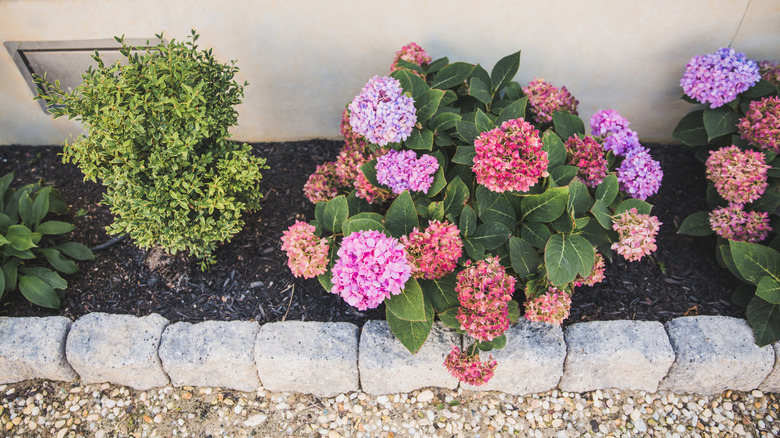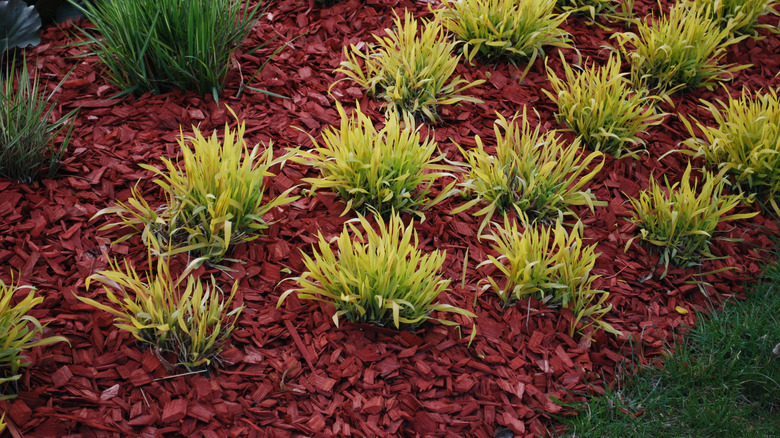Tips & Tricks For Choosing The Best Color Mulch To Boost Your Home's Curb Appeal
Choosing the best type of mulch for your garden is no easy task. To start, you have many material options, including organic and inorganic mulches. Once you narrow it down, you still have to choose the specific style or color. It can be an overwhelming decision that affects the health of your plants and the curb appeal of your home. Choosing a color that clashes with the plants or house makes your landscaping stand out for all the wrong reasons. There isn't one clear winner when it comes to the best mulch color for curb appeal. It depends on your home's exterior design, what you're planting in the area, and what type of look you want to achieve.
Wood mulch comes in natural hues, but it's also available in various colors. Common options are red, brown, black, and gold. All of the mulch options have a similar shredded wood texture, but they look completely different based on the specific color of the dye. For example, brown-dyed mulch often looks more subtle and natural while black mulch stands out as a bold, modern color. The hue you choose can complement or contrast with plants, your house, and other nearby features, which affects the overall look. When choosing your mulch color, consider if you want the ground cover to blend in with the surroundings or create contrast. Also think about the overall look you want to create, whether that's natural and subtle or bold and contemporary.
Choose brown or gold mulch for a natural, warm look
Brown mulch offers a color that's similar to soil, creating a natural backdrop for all types of flowers and greenery. It has a way of adding vibrancy to both light and dark foliage, making it a versatile option that works in all styles of gardens. Brown also creates a unifying effect, which can help tie together a variety of plants to create a more cohesive look. Choose brown if you want the focus of your curb appeal to be your plants and don't want the mulch to stand out.
When it comes to your home's facade, brown mulch adds warmth and often softens the harsh lines, especially for red brick exteriors. It works particularly well for classic, traditional homes, but it can also be used with other styles. Brown is a much more understated color choice than bolder options like black and red. It's generally a safe choice that works in most situations.
Gold is a similar option that maintains the inviting feel and warmth of brown while lending vibrancy and glow to the outdoor space. It teams up well with vividly colored flowers and darker green foliage. However, it can clash with lighter chartreuse leaves, so consider the foliage color of the plants in the area. Flower colors that work well with gold mulch include cool shades like purple, green, and blue. On the downside, gold mulch fades quickly, so it may look dull faster than darker mulches.
Modernize your exterior with black mulch
Carbon-infused dyes create the bold, modern, sophisticated look of black mulch. The dark color makes the mulch stand out against your lawn and any greenery, especially for lighter-colored or variegated plants. Creating that contrast with the darker ground cover brightens the surrounding colors, which highlights them in your landscaping.
When it comes to your home, black works well for contemporary facades if you want to enhance the sleek design. Further, against a light home, the black mulch deepens the contrast. Whereas if you have a darker-colored home, you get a continuous, sleek appearance. Black mulch works particularly well with gray homes. The rich hue creates appealing contrast against brick, but it highlights the sharpness of the squared blocks rather than softening the lines like brown does.
Black mulch tends to hold its color better than red and brown, which makes it a low-maintenance option that helps to increase your home's curb appeal. One of the drawbacks of black mulch is how much heat it absorbs, which can make it dangerous for delicate plants. If you live in a hot area, it might be best used to accent yard art, water features, or other hardscape elements. As a border, black mulch helps create a well-defined space due to its contrast with the surrounding colors.
Create contrast with red mulch
The red color in mulch often comes from iron oxide or dyes made from soy or vegetables, which helps make colored mulch safer to use in your garden. Even though it's often associated with commercial landscaping, red mulch also works for residential outdoor areas when you want contrast with a pop of color. It can energize your landscaped areas and works well to create a more rustic look than the modern sophistication of black. Rock gardens and red mulch pair well together, too.
Red mulch works with a warm palette, whether that's your siding or the plants in your garden. Next to lighter colors, the hue looks even more vibrant for a greater contrasting design that can increase your home's curb appeal. That means red could be the best choice against a tan, cream, white, or beige home. This hue also amplifies the look of brightly colored flowers, so you might choose this mulch shade when you want those bold blooms to be the focus of your outdoor space. It's especially complementary to flowers with warm shades like pink, orange, and yellow.
There are a few drawbacks, though. Red-colored mulches could cause staining on your sidewalks or other nearby hardscape areas, particularly if they're lighter colored. It might not be the best choice in locations that receive lots of direct sunlight since the red color tends to fade easily. Be prepared to replace the vibrant-colored mulch frequently to maintain its vivid look. This shade can also be too much if you use it next to a red brick home because there isn't any contrast. Plus, it's not the ideal choice if you want a more natural look.



